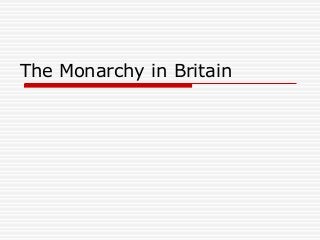Report
Share

Recommended
Recommended
More than Just Lines on a Map: Best Practices for U.S Bike Routes
This session highlights best practices and lessons learned for U.S. Bike Route System designation, as well as how and why these routes should be integrated into bicycle planning at the local and regional level.
Presenters:
Presenter: Kevin Luecke Toole Design Group
Co-Presenter: Virginia Sullivan Adventure Cycling AssociationMore than Just Lines on a Map: Best Practices for U.S Bike Routes

More than Just Lines on a Map: Best Practices for U.S Bike RoutesProject for Public Spaces & National Center for Biking and Walking
More Related Content
Featured
More than Just Lines on a Map: Best Practices for U.S Bike Routes
This session highlights best practices and lessons learned for U.S. Bike Route System designation, as well as how and why these routes should be integrated into bicycle planning at the local and regional level.
Presenters:
Presenter: Kevin Luecke Toole Design Group
Co-Presenter: Virginia Sullivan Adventure Cycling AssociationMore than Just Lines on a Map: Best Practices for U.S Bike Routes

More than Just Lines on a Map: Best Practices for U.S Bike RoutesProject for Public Spaces & National Center for Biking and Walking
Featured (20)
Content Methodology: A Best Practices Report (Webinar)

Content Methodology: A Best Practices Report (Webinar)
How to Prepare For a Successful Job Search for 2024

How to Prepare For a Successful Job Search for 2024
Social Media Marketing Trends 2024 // The Global Indie Insights

Social Media Marketing Trends 2024 // The Global Indie Insights
Trends In Paid Search: Navigating The Digital Landscape In 2024

Trends In Paid Search: Navigating The Digital Landscape In 2024
5 Public speaking tips from TED - Visualized summary

5 Public speaking tips from TED - Visualized summary
Google's Just Not That Into You: Understanding Core Updates & Search Intent

Google's Just Not That Into You: Understanding Core Updates & Search Intent
The six step guide to practical project management

The six step guide to practical project management
Beginners Guide to TikTok for Search - Rachel Pearson - We are Tilt __ Bright...

Beginners Guide to TikTok for Search - Rachel Pearson - We are Tilt __ Bright...
Unlocking the Power of ChatGPT and AI in Testing - A Real-World Look, present...

Unlocking the Power of ChatGPT and AI in Testing - A Real-World Look, present...
More than Just Lines on a Map: Best Practices for U.S Bike Routes

More than Just Lines on a Map: Best Practices for U.S Bike Routes
Ride the Storm: Navigating Through Unstable Periods / Katerina Rudko (Belka G...

Ride the Storm: Navigating Through Unstable Periods / Katerina Rudko (Belka G...
4479943.ppt
- 1. The Monarchy in Britain
- 2. The Origin of the British Monarchy The monarchy is the oldest secular institution in the UK, going back at least to the 9th century. For several centuries the monarch personally exercised supreme executive. The 17th-century struggle between Crown and Parliament led to the establishment of a limited constitutional monarchy. The Monarch, however, remained the centre of executive power throughout most of the 18th century. By the end of the 19th century with the establishment of a modern party system, the withdrawal of the monarch from the active participation in politics had become complete.
- 3. The History of the British Monarchy In 1066 the English monarchy passed to the Norman conquerors. In the thirteenth century, the principality of Wales was absorbed by England. From 1603, when the Scottish king James VI inherited the English throne as James I, both kingdoms were ruled by a single monarch. From 1649 to 1660, the tradition of monarchy was broken by the republican Commonwealth of England that followed the War of the Three Kingdoms. In 1707, the kingdoms of England and Scotland were merged to create the Kingdom of Great Britain and, in 1801, the Kingdom of Ireland joined to create the United Kingdom of Great Britain and Ireland.
- 4. The British monarch became nominal head of the vast British Empire, which covered a quarter of the world at its greatest extent in 1921.
- 5. The terms British monarchy and British monarch are frequently still employed in reference not only to the extra national person and institution shared amongst all 16 of the realms, but also to the distinct monarchies within each of these countries. At present, 15 other independent Commonwealth countries share with the United Kingdom their monarch.
- 6. The Personal Powers of the Monarch The Monarch reigns but doesn’t rule. The Monarch summons, prorogues and dissolves Parliament. All the bills must receive the Royal Assent (monarch’s approval). Monarch confers different kinds of honours. Monarch has the power to conclude treaties, to declare war and make peace.
- 7. The Monarch’s Public Functions One the most important duties the Sovereign performs is to act as a host to the heads of States of Commonwealth. Guests stay at Buckingham Palace and at the Palace of Holyroodhouse.
- 8. The Monarch is a head of all 3 armed service. The Monarch is Colonel-in-Chief. The Monarch also bestows the awards conferred on civilians and members of the armed forces. Annually some 2200 orders and medals are presented.
- 9. The End